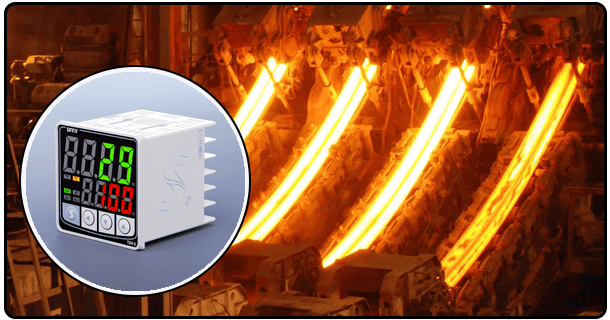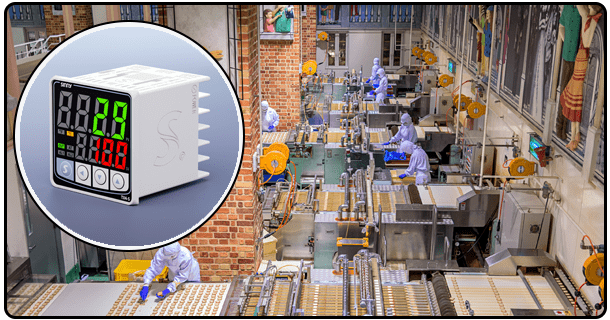The PID tuning of temperature control valves: methods, applications, and challenges
1. Introduction
It also provides valuable insight into how to achieve precise temperature regulation.
2. Understanding PID Control
The PID system is widely used in the temperature control of systems. It combines three terms, Proportional Integral and Derivative.
Proportional Terms (P) : This term adjusts the output according to the magnitude of the deviation from the setpoint.
Integral Terms (I): This term addresses past mistakes, eliminating steady-state offset and ensuring stability on a long-term basis.
Derivative Terms (D) : By predicting future errors based on the rate of changes, proactive adjustments can be made to improve system responsiveness.
Combining these two terms allows PID controllers to maintain temperature targets even under dynamic conditions.
3. The Components in a Temperature Control Valve System
The temperature control system is composed of interconnected parts:
Thermostat Control Valve These valves control the flow of liquids and adjust temperature according to demands. Globe valves and Butterfly valves are two common types.
Temperature Sensors provide accurate feedback in real time on the environmental conditions.
Actuators These devices respond to the signals of the PID controller and control the position of the valve.
PID controller is the central component of the system. It processes sensor data, and adjusts the output from the actuator to keep temperatures stable.
This seamless integration is essential to the accuracy and functionality of your system.
4. The Importance Of PID Tuning
The PID tuning process is the configuration of the controller parameters (P I D) in order to optimize system performance. Incorrect tuning can cause issues like oscillations or slow responses. Well-tuned parameter settings ensure that:
Efficiency Reduces energy consumption and operating costs.
Accuracy : Minimum temperature deviation (in degrees) from setpoint.
Stability: Consistent performance under different conditions.
The PID is therefore crucial to maximizing both the reliability and effectiveness of temperature control systems.
PID tuning methods
Ziegler-Nichols Method
The Ziegler-Nichols Method is a systematic method for tuning PIDs.
Identification of the critical gain where the system starts to oscillate.
Measure the oscillation duration
Calculate PID parameters using predefined formulas.
The manual adjustment of systems is time-consuming. This technique can be used to save on the cost.
A Trial-and Error Approach
5. Software-Assisted tuning
Simulation environments like MATLAB or LabVIEW are available for automating tuning. Benefits include:
Parameter adjustments are now faster and more precise.
Visualization of System Performance Metrics
Precision enhanced for complex systems
The methods are designed to cater for different applications and needs.
6. Steps to Tuning a PID
Follow these steps to tune a PID for a system of temperature control valves:
Initial Installation Install temperature sensors and actuators. Make sure that all connections are correct.
Calibration : calibrate sensors for accurate temperatures readings.
Baseline testing Test to determine the default performance of the system and areas that need improvement.
Modify Parameters: Change PID parameters by using any of the above methods.
Validate the Results Test your system in different operating conditions and confirm accuracy.
This approach ensures a systematic tuning of the system, optimizing its performance.
7. Application of temperature control valve PID tuning
In a wide range of industries, PID tuning is crucial for temperature control vales.
Industrial Processes : To ensure the quality of products and efficient manufacturing, chemical plants and manufacturing units rely on temperature control.
HVAC System Proper tuning improves the climate control of buildings and reduces energy consumption, while maintaining comfort.
Laboratory equipment: precision temperature control is used to support research and experiments in scientific settings.
Energy Systems Boilers, heat exchangers and other systems benefit from a stable temperature control. This improves operational reliability.
The applications highlight the importance of PID tuning for accurate and stable temperatures control.
Challenges & Solutions
There are several challenges that can arise when tuning PID for temperature control systems.
Challenges
Delays in Actuator Response: A slow response time can lead to oscillation or overshooting.
Disturbances Due to the Environment External factors such as temperature fluctuations or changing loads can affect system stability.
Solutions
Calibration : Regular calibration is required to ensure sensors deliver accurate data.
Use High-Quality Parts: To minimize delay, use reliable valves and actuators.
Control: Use systems that can adapt to changes in the environment.
These challenges can help to preserve system efficiency and reliability.
8. Future Trends for PID Tuning
The following key trends continue to improve PID tuning:
IoT Integration : Remote monitoring and control via internet-connected devices.
AI Driven Adaptive tuning: Using artificial intelligence, PID parameters are adjusted dynamically on the basis of real-time data.
Sensor Technology High precision sensors deliver more accurate feedback and improve system reliability.
The future of temperature control systems can be enhanced by PID tuning.























